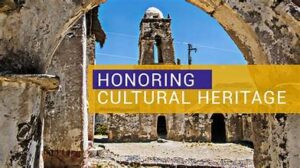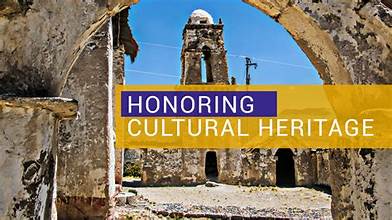The preservation of cultural heritage sites is critical for maintaining our history, identity, and cultural diversity. As the world advances technologically, digital innovations are playing a transformative role in how we preserve, protect, and interpret these invaluable sites. This article explores the key digital technologies revolutionizing cultural heritage preservation and their impact on ensuring that future generations can enjoy and learn from these historical treasures.
1. 3D Scanning and Modeling
3D scanning and modeling have become vital tools in preserving cultural heritage sites. These technologies allow for the creation of detailed digital replicas of sites and artifacts. Using laser scanners and photogrammetry, experts can capture intricate details of structures and objects, creating accurate three-dimensional models.
Benefits:
- Detailed Documentation: Provides a comprehensive record of the site’s current state, including intricate details that might be lost over time.
- Virtual Access: Enables remote access to digital replicas, making it possible for people worldwide to explore and learn about these sites without physical travel.
- Restoration and Conservation: Assists in planning and implementing restoration projects by providing a reference for the original state of the site.
2. Augmented Reality (AR) and Virtual Reality (VR)
Augmented Reality (AR) and Virtual Reality (VR) are reshaping how people experience cultural heritage sites. These technologies offer immersive experiences that enhance public engagement and educational outreach.
Applications:
- AR Applications: Overlay digital information and reconstructions onto physical sites through mobile devices, enriching visitors’ understanding of the site’s history and significance.
- VR Experiences: Provide fully immersive virtual tours of heritage sites, allowing users to explore these sites in detail from the comfort of their homes. This is particularly valuable for sites that are inaccessible due to geographical or political reasons.
Benefits:
- Enhanced Learning: Offers interactive learning experiences that can be tailored to different educational levels and interests.
- Increased Accessibility: Makes it possible for people with disabilities or those unable to travel to experience cultural heritage sites.
- Promotes Preservation: Reduces physical wear and tear on sensitive sites by offering virtual alternatives for education and tourism.
3. Digital Archives and Databases
Digital archives and databases are essential for cataloging and managing information about cultural heritage sites. These platforms store vast amounts of data, including historical records, photographs, and research findings.
Benefits:
- Centralized Information: Provides a comprehensive repository of information that is easily accessible to researchers, historians, and conservationists.
- Enhanced Research: Facilitates research and analysis by allowing access to a wide range of documents and media.
- Public Engagement: Engages the public by providing online access to archives and databases, increasing awareness and interest in cultural heritage.
4. Artificial Intelligence (AI) and Machine Learning
Artificial Intelligence (AI) and machine learning are increasingly being used to analyze and predict changes in cultural heritage sites. These technologies help in monitoring the condition of sites, detecting potential threats, and guiding conservation efforts.
Applications:
- Predictive Analysis: Uses data to forecast potential risks and deterioration patterns, enabling proactive conservation measures.
- Image Recognition: Identifies and categorizes artifacts and features in images, assisting in the documentation and analysis process.
Benefits:
- Improved Monitoring: Enhances the ability to track changes and address issues before they become severe.
- Efficient Resource Allocation: Optimizes the use of resources by focusing efforts where they are most needed based on predictive analysis.
5. Digital Restoration Techniques
Digital restoration techniques involve using software tools to restore and reconstruct damaged or deteriorated sites and artifacts virtually. These techniques can recreate missing parts of artifacts or simulate how a site appeared in its prime.
Benefits:
- Accurate Restorations: Allows for precise restorations based on detailed digital models and historical data.
- Historical Accuracy: Ensures that reconstructions are based on accurate information, preserving the historical integrity of the site or artifact.
6. Crowdsourcing and Citizen Science
Crowdsourcing and citizen science initiatives harness the power of the public to contribute to cultural heritage preservation. These approaches involve engaging volunteers in data collection, analysis, and even digital reconstruction projects.
Benefits:
- Increased Participation: Encourages broader public involvement in preservation efforts, fostering a sense of community and shared responsibility.
- Resource Expansion: Expands the capacity for data collection and analysis beyond traditional institutional resources.
Conclusion
Digital innovations are revolutionizing the preservation of cultural heritage sites by enhancing documentation, providing immersive experiences, and improving conservation efforts. Technologies such as 3D scanning, AR, VR, digital archives, AI, and digital restoration are not only preserving these invaluable sites but also making them more accessible and engaging for people around the world. As technology continues to advance, the integration of these tools will play an increasingly important role in ensuring that cultural heritage is preserved for future generations to explore and appreciate.





